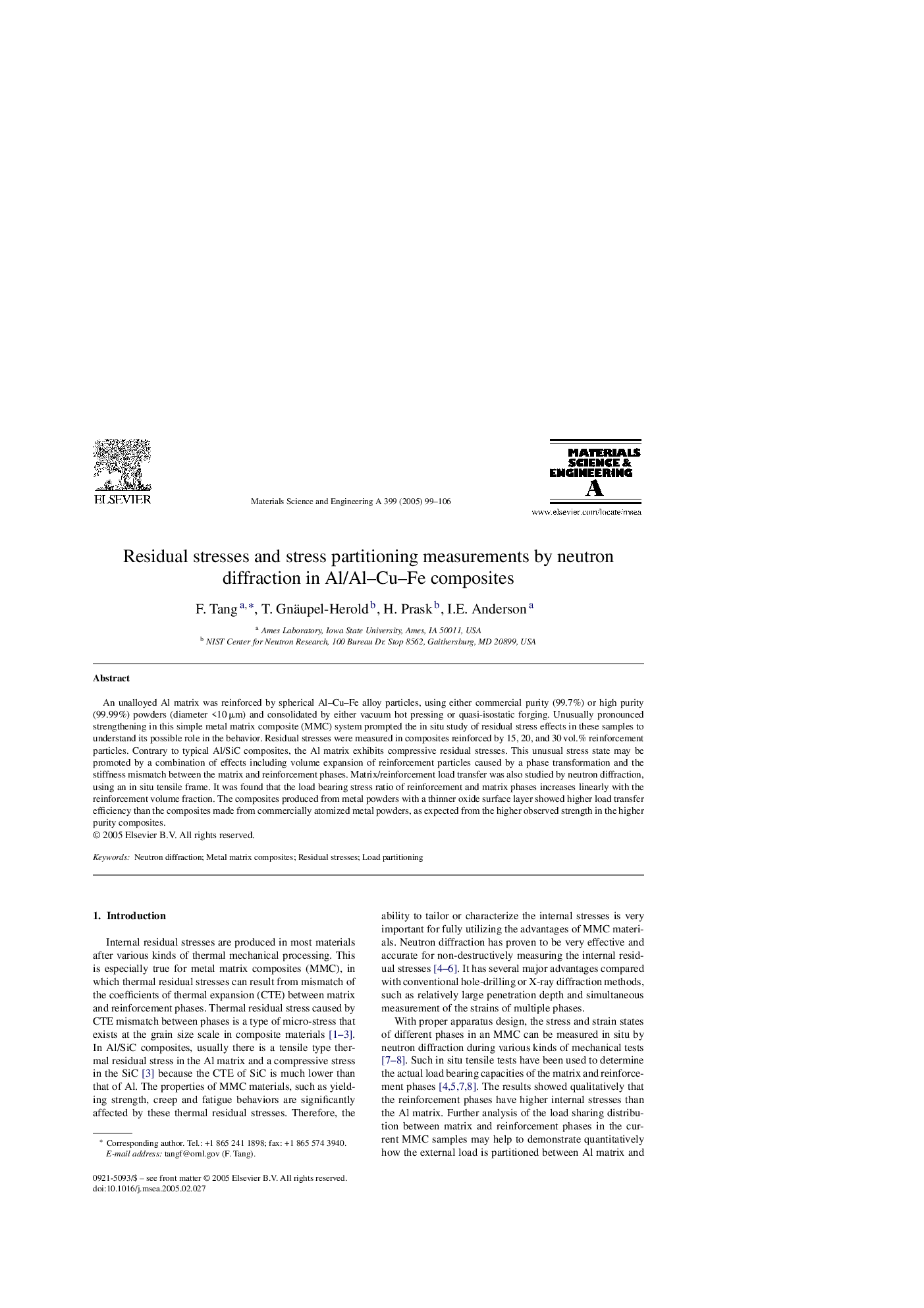| Article ID | Journal | Published Year | Pages | File Type |
|---|---|---|---|---|
| 9796177 | Materials Science and Engineering: A | 2005 | 8 Pages |
Abstract
An unalloyed Al matrix was reinforced by spherical Al-Cu-Fe alloy particles, using either commercial purity (99.7%) or high purity (99.99%) powders (diameter <10 μm) and consolidated by either vacuum hot pressing or quasi-isostatic forging. Unusually pronounced strengthening in this simple metal matrix composite (MMC) system prompted the in situ study of residual stress effects in these samples to understand its possible role in the behavior. Residual stresses were measured in composites reinforced by 15, 20, and 30 vol.% reinforcement particles. Contrary to typical Al/SiC composites, the Al matrix exhibits compressive residual stresses. This unusual stress state may be promoted by a combination of effects including volume expansion of reinforcement particles caused by a phase transformation and the stiffness mismatch between the matrix and reinforcement phases. Matrix/reinforcement load transfer was also studied by neutron diffraction, using an in situ tensile frame. It was found that the load bearing stress ratio of reinforcement and matrix phases increases linearly with the reinforcement volume fraction. The composites produced from metal powders with a thinner oxide surface layer showed higher load transfer efficiency than the composites made from commercially atomized metal powders, as expected from the higher observed strength in the higher purity composites.
Related Topics
Physical Sciences and Engineering
Materials Science
Materials Science (General)
Authors
F. Tang, T. Gnäupel-Herold, H. Prask, I.E. Anderson,
